The Delhi government invites startups, companies, and researchers to pitch affordable, scalable technologies targeting vehicular, construction, and industrial emissions — with grants up to ₹50 lakh for deployable solutions.
New Delhi | October 11, 2025
With the capital bracing for another pollution-heavy winter, the Delhi government has shifted gears — this time turning to innovators, engineers, and entrepreneurs for help.
The Delhi Pollution Control Committee (DPCC) has launched an “Innovation Challenge for Clean Air”, calling on startups, institutions, and researchers to submit deployable technologies that can reduce emissions from vehicles, construction sites, and industrial sources — the three biggest culprits of Delhi’s smog.
Under the programme, shortlisted teams will undergo a three-stage evaluation: expert review, laboratory validation, and on-ground field trials. Winners of the final stage could receive funding support of up to ₹50 lakh, in addition to mentoring and pilot deployment opportunities across Delhi.
A Timely Call for Action
The initiative, unveiled by Environment Minister Manjinder Singh Sirsa, comes as Delhi’s air quality begins to deteriorate with the seasonal drop in temperatures. The city’s Air Quality Index (AQI) touched the “poor” category earlier this week — a familiar precursor to the October–January smog cycle.
“We need innovation that is not stuck in research papers, but running on Delhi’s roads,” said Minister Sirsa during the launch event. “Our aim is to identify affordable, scalable and transparent technologies that can make an immediate difference in reducing PM2.5 and PM10 levels.”
Authorities said the programme is designed to cut red tape between lab and street, offering entrepreneurs a fast-track to pilot their solutions within city infrastructure.
Structure of the Challenge
The Innovation Challenge has been structured to reward practicality over theory.
- Stage 1 – Concept Review:
Submitted ideas will be screened by a multi-disciplinary expert committee comprising DPCC officials, IIT Delhi faculty, and representatives from the energy and mobility sectors.
Focus: Scalability, cost efficiency, innovation value, and readiness level. - Stage 2 – Laboratory Validation:
Shortlisted entries will receive ₹5 lakh for prototype development and validation in accredited labs.
Focus: Real-world performance under controlled conditions. - Stage 3 – Field Trials & Deployment:
Selected technologies demonstrating tangible pollution control will enter city-level trials, with funding support up to ₹50 lakh and potential adoption across Delhi’s municipal or industrial networks.
“We will prioritize solutions that can be deployed before this year’s smog season peaks,” said DPCC Member Secretary, A.K. Sinha. “Every day saved from research to rollout counts.”
Target Areas: Where Innovation is Needed Most
Officials identified three core sectors responsible for over 70% of Delhi’s air pollution load.
🚗 1. Vehicular Emissions
- Retrofitting kits for old commercial vehicles.
- AI-based traffic flow optimization systems.
- Smart sensors for emission compliance.
“Delhi has over 12 lakh registered vehicles older than 10 years,” noted a DPCC report. “Retrofitting and monitoring could drastically reduce their impact.”
🏗️ 2. Construction Dust
- Low-cost dust suppression tech using recycled water.
- Real-time air-quality sensors at construction sites.
- Drones for inspection and dust control.
The construction sector alone contributes nearly 30% of suspended particulate matter (SPM) in Delhi’s air.
⚙️ 3. Industrial Sources
- Stack emission reduction tools for small factories.
- Smart filters and green manufacturing aids.
- Compact waste-to-energy devices for micro-industries.
Innovation Meets Urgency
Delhi’s pollution crisis has long demanded technological interventions, but progress has been slow. This challenge aims to bridge the innovation gap — between those building new ideas and those implementing them.
“We have countless students and startups designing clean-air tech,” said Dr. Arvind Kumar, lung specialist and founder of the Lung Care Foundation.
“What they lacked was a platform to test these solutions in the real world. This challenge finally creates that bridge.”
Funding and Partnerships
The initiative is being co-funded by the Delhi government’s Environment and Industry departments. The Technology Development Board (TDB) and several CSR-backed climate funds have expressed willingness to co-sponsor field deployments.
Private incubators — including NASSCOM Foundation, Electropreneur Park, and CleanTech Open India — will mentor participants through the validation phase.
“Innovation needs an ecosystem, not just a grant,” said Poonam Aggarwal, Director at NASSCOM Foundation. “We’re focusing on mentorship, commercialization, and investor access.”
Registration and Evaluation Timeline
- Application Open: Until October 31, 2025
- Shortlisting: By November 15, 2025
- Lab Validation: November–December 2025
- Field Trials: January–March 2026
All selected projects will be required to publish measurable results — a move experts say could boost transparency and public trust in air-quality initiatives.
Public Trust Through Open Data
Transparency remains a cornerstone of the challenge. The DPCC has committed to releasing open-source trial data via the city’s public air-quality portal.
“Every citizen should be able to see what works and what doesn’t,” said Minister Sirsa. “We want to build not just clean air, but clean governance.”
Independent evaluators, including academics from TERI, IIT Delhi, and Delhi University, will audit field trial outcomes to ensure credibility.
Expert Views: From Policy to Practice
Environmental researchers welcomed the initiative’s outcome-oriented design.
Prof. Vibha Dhawan, Director General of TERI, said:
“This is the right direction — focus on deployable tech, not policy papers. Delhi’s air crisis requires speed, experimentation, and accountability.”
Dr. Mukesh Sharma, environmental engineer at IIT Kanpur, emphasized the importance of scalability:
“Too often, great ideas stay at lab scale because nobody funds the jump to the field. This challenge could fill that critical gap.”
Learning from the Past
Delhi’s air-quality programmes have historically suffered from short-term measures—sprinklers, smog towers, and odd-even vehicle schemes—often offering symbolic rather than sustained relief.
This time, officials insist, the approach is systemic and data-driven.
Past efforts such as the smog tower at Connaught Place showed limited coverage, cleaning only 1 km² of air per day. Mechanized sweeping and dust guns, while useful, failed to scale efficiently.
The innovation challenge, by contrast, seeks scalable tech that grows with the city.
“Think of it as Delhi’s own Silicon Valley for clean air,” said Rohit Mehra, Additional Secretary, Environment Department. “We’re building a marketplace for solutions, not slogans.”
Citizen Scientists and Students Join In
Universities and research institutes have been quick to respond. IIT Delhi, Jamia Millia Islamia, and Indraprastha University have announced hackathons aligned with the challenge themes.
EcoClub volunteers from Delhi’s schools are also participating under a special category for student innovations — particularly in air-quality sensors and awareness tech.
“This will inspire a generation of young problem-solvers,” said Prof. Ritu Raj, Principal of Rajdhani Engineering College. “When students see their prototype operating in their own city, learning becomes transformation.”
Global Comparisons: Learning from the World
Delhi’s innovation challenge joins a growing list of city-led clean-tech competitions around the globe.
| City | Initiative | Focus | Outcome |
| Beijing, China | Blue Sky Innovation Grants | Industrial emission filters | 12 startups funded |
| Los Angeles, USA | Cleantech LA Challenge | EV infrastructure, sensors | 8 pilots deployed |
| Paris, France | UrbanTech for Air | Low-cost AQI monitors | Citywide network built |
| Delhi, India | Innovation Challenge 2025 | Dust, vehicular & industrial pollution | In progress |
Environmental economists say Delhi’s model — offering direct field access and real-time evaluation — may actually be more agile than many Western programmes.
The Economics of Clean Air
According to a World Bank study, Delhi’s pollution costs the city 2.2% of its GDP annually through lost productivity and healthcare expenses.
A successful innovation ecosystem could not only reduce emissions but also create a green economy of startups, jobs, and patents.
“Pollution control can become an economic multiplier,” said Dr. Reema Arora, policy fellow at Brookings India. “Every rupee spent on innovation returns two rupees in avoided health and social costs.”
Voices from the Startup Ecosystem
Arnav Gupta, founder of the clean-tech startup AirSense Labs, said the challenge offers hope for innovators struggling to scale.
“We’ve had air-monitoring tech for years, but pilots often die in paperwork. Now, with government grants and field trials, ideas can finally meet impact.”
Another participant, Meenal Jain, co-founder of DustOff Technologies, is developing modular dust barriers for small construction sites.
“Our tech can reduce on-site PM by 40%. We hope to prove it in Dwarka and Rohini if we make the shortlist.”
Environmentalists: Pragmatic but Watchful
While broadly supportive, environmentalists have called for strong post-deployment monitoring to prevent tokenism.
Anumita Roychowdhury of CSE said:
“Challenges and hackathons are good optics, but results matter. Deployment must be sustained beyond pilot headlines.”
She urged the DPCC to integrate successful technologies into policy mandates, such as construction permits and vehicle emission rules, ensuring continuity beyond the competition.
Linking Innovation to Governance
Officials said the best-performing technologies could be directly adopted by municipal corporations, Delhi Transport Corporation (DTC) depots, and Public Works Department (PWD) sites.
“We want city agencies to become first adopters,” said a senior Environment Department official. “A good solution should not die after the prize money; it should become policy.”
DPCC will also explore public-private partnerships (PPP) for large-scale rollout of validated solutions.
Integration with National Clean Air Mission
The Delhi Innovation Challenge feeds into the National Clean Air Programme (NCAP), under which cities must demonstrate a 40% pollution reduction by 2026.
By funding hyperlocal solutions, the city aims to complement large-scale measures like fuel quality upgrades, EV adoption, and crop-burning control.
Technology Meets Transparency
DPCC will use blockchain-based tracking for grant disbursal and milestone monitoring — a first for any city-level environmental competition in India.
“It ensures every rupee is accounted for and progress is traceable in real time,” said Rajan Taneja, DPCC’s project coordinator.
Participants must submit open-source documentation for their solutions, enabling replication by other cities under NCAP.
Long-Term Vision: Delhi as a Clean-Tech Capital
Delhi’s broader vision is to position itself as a hub for environmental innovation — a city that not only battles pollution but exports solutions.
Officials are considering an annual Clean-Tech Expo, showcasing startups emerging from the challenge, alongside government buyers and investors.
“Pollution has been Delhi’s curse,” said Minister Sirsa. “Perhaps innovation can turn it into Delhi’s opportunity.”
Challenges Ahead
Experts warn that the success of the programme will depend on three critical factors:
- Timely disbursement of funds to sustain startup momentum.
- Transparent evaluation free from bureaucratic favoritism.
- Post-trial adoption, without which pilots risk becoming one-time showcases.
“Innovation must survive beyond press releases,” cautioned Dr. Beig (SAFAR). “Otherwise, it’s just another headline.”
Citizen Role and Community Engagement
The government plans to include citizen observers in field trials. Residents near test zones will receive air-quality updates via mobile notifications, building awareness and engagement.
“When citizens track local pollution, accountability improves,” said Ritika Anand, an activist with My Right To Breathe. “Innovation works best when people participate.”
Conclusion: From Problem to Platform
The Delhi Innovation Challenge for Clean Air represents a hopeful turn in the city’s decades-long fight against smog.
Instead of top-down bans or reactionary measures, it channels the energy of startups, students, and scientists toward measurable, solution-driven impact.
The path ahead will test more than machines — it will test political will, public cooperation, and institutional agility.
But if Delhi can turn its most persistent problem into a platform for invention, it may finally begin rewriting the story of its air — from gray despair to clear ambition.
#Delhi #Innovation #CleanTech #AirQuality #Startups #Policy #Environment #PollutionControl #InnovationChallenge #SarhindTimes
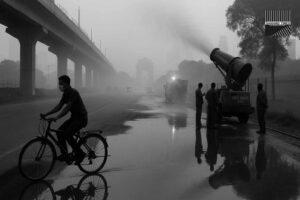


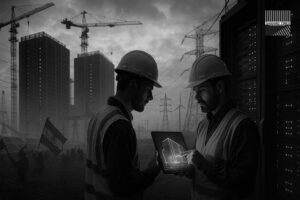




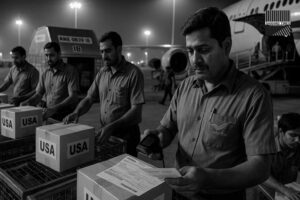


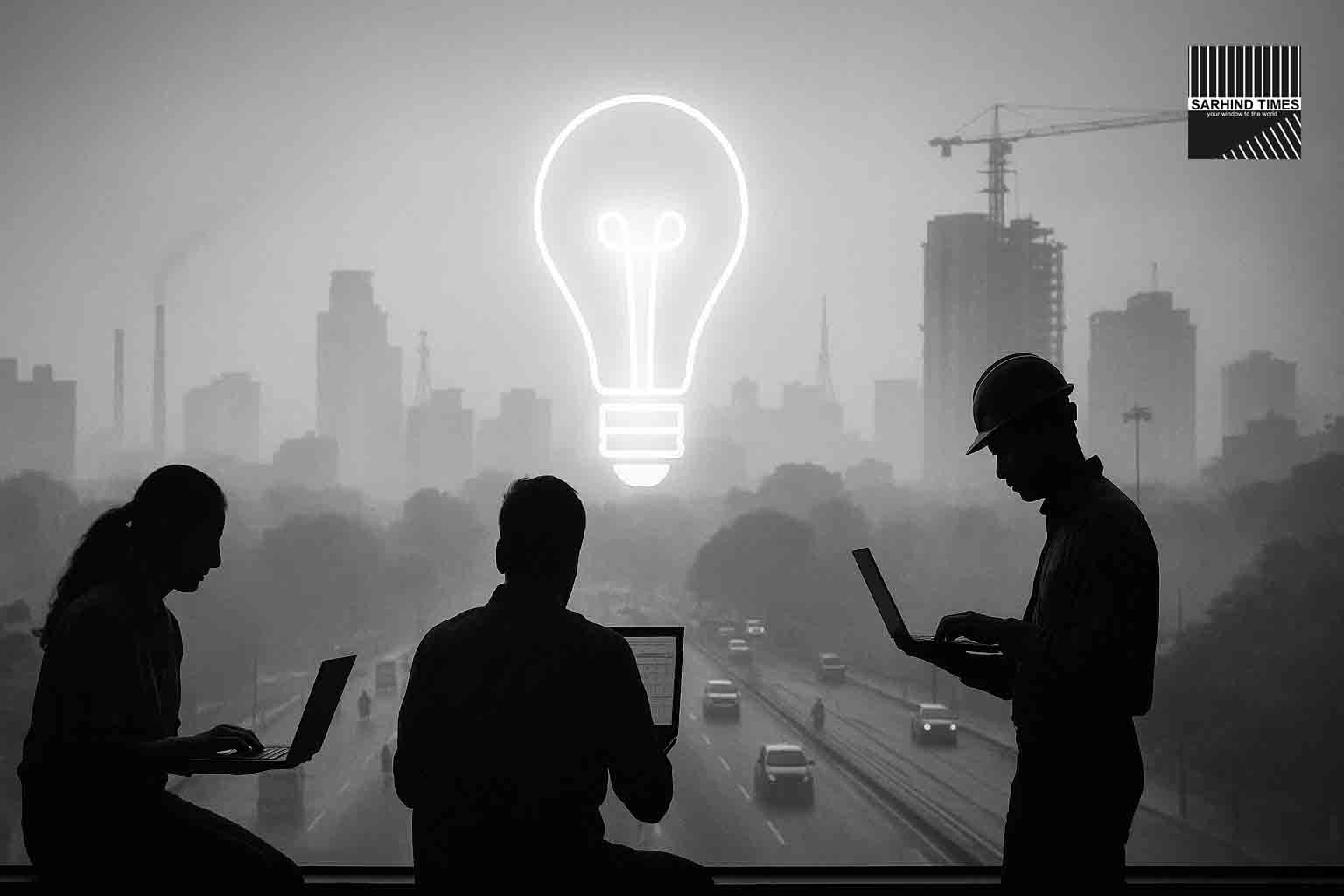
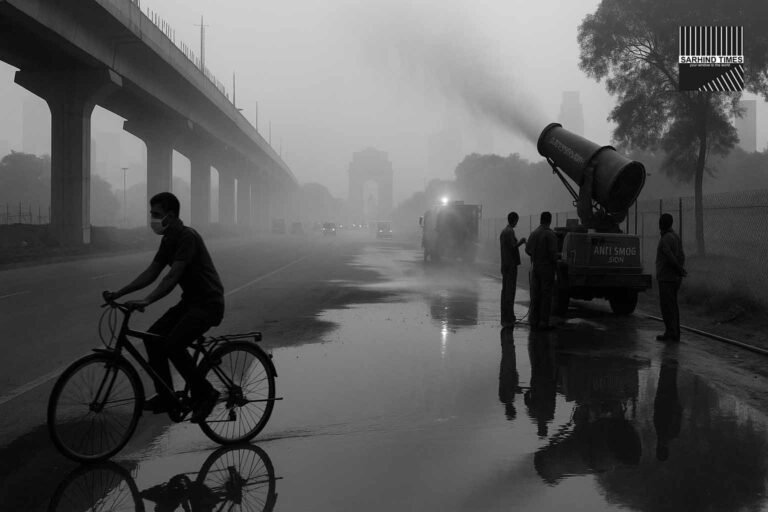

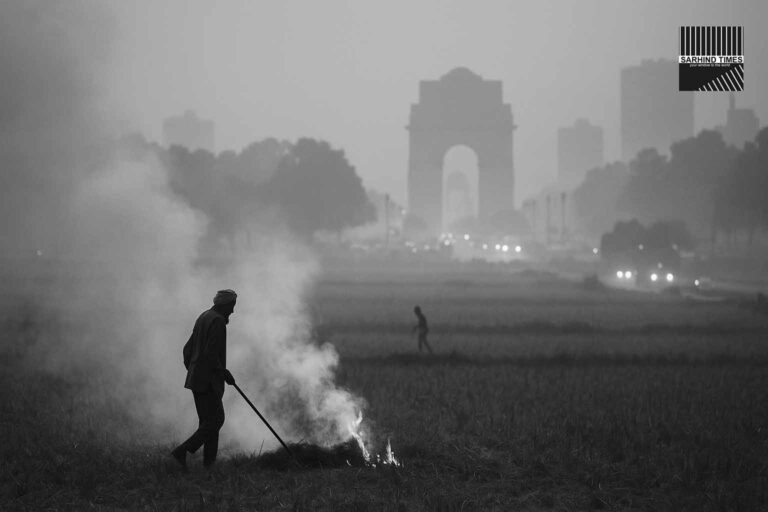
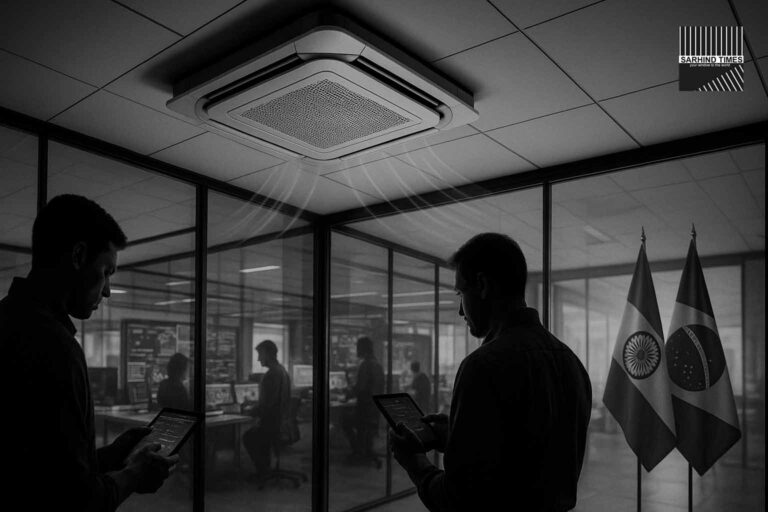
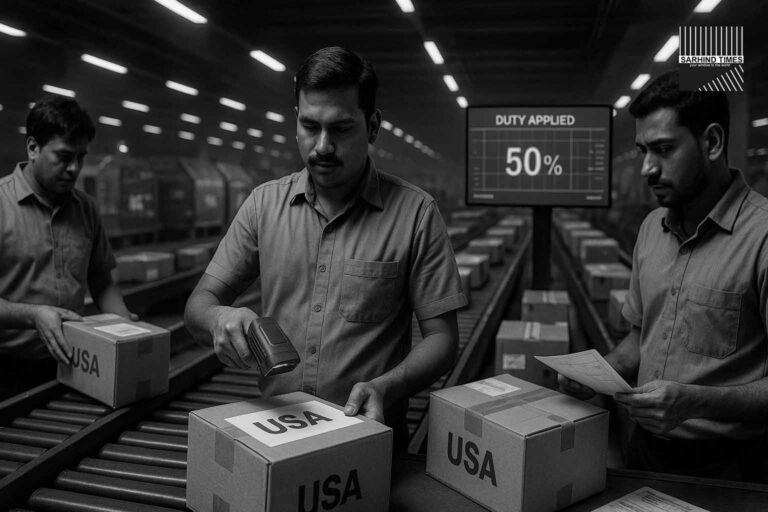


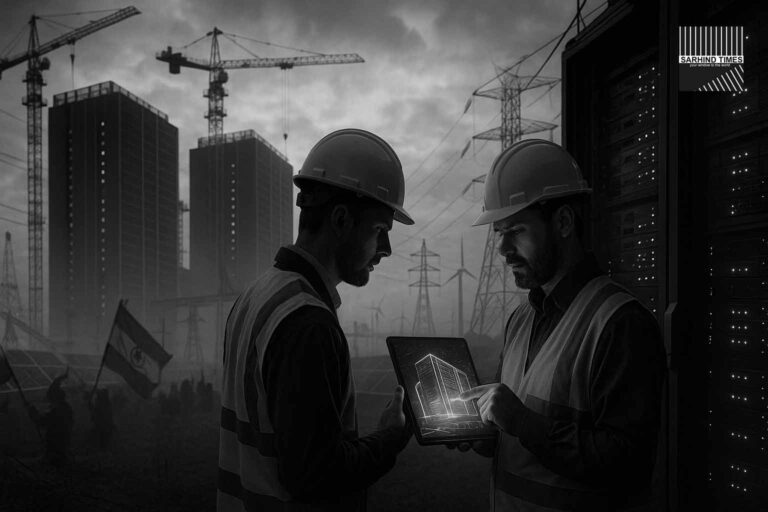

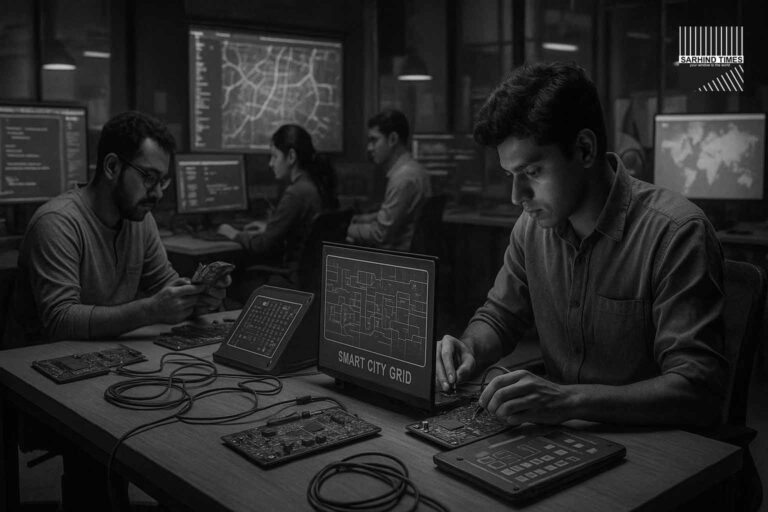
+ There are no comments
Add yours